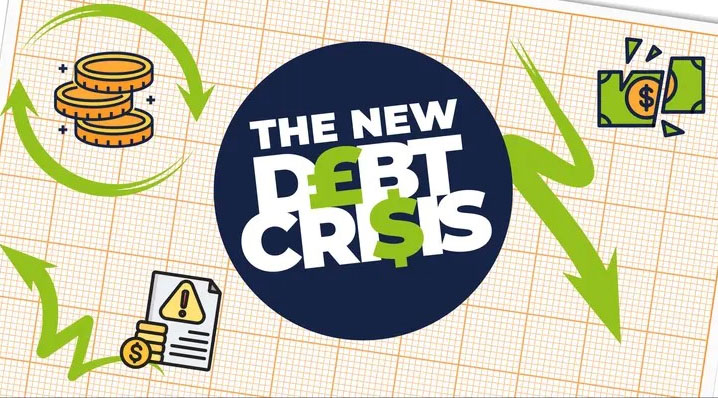By John Daniel Obioma
Sombre highlights from the United Nations Conference on Trade and Development (UNCTAD) 2024 publication entitled A world of debt: A growing burden to global prosperity are all one needs to catch a glimpse of the burgeoning burden threatening the global economy.
Using statistics published by the United Nations Global Crisis Response Group (UN GCRG), the UNCTAD laments that global public debt reached “a record” $97 trillion in 2023. It represents 93 percent of global GDP and is projected to deteriorate to 100 percent by the year 2030. The agency is particularly saddened that public debt burden in developing countries is relatively worse than in developed ones, since poor countries’ debt has grown “twice as fast as” as in advanced, rich economies, familiar as that may sound.
The Word Bank, on its part, is bothered that there have been 10 sovereign defaults in the past three years, surpassing the total for the preceding two decades.
Interestingly, the UNCTAD doesn’t say public debt is all bad. On the contrary, it correctly posits that public debt “can be vital for development” but warns that it “can also be a heavy burden when public debt grows too much or too fast.” Its conclusion is unequivocal: “This is what is happening today across the developing world.”
The GCRG figures, compiled in collaboration with the IMF, expose the untenable irony and perversity in the global credit markets. Borrowing costs for weak, developing countries are higher than those of financially strong, developed ones.
Take bond yields for the period 2020-2024. While the average rate for African countries’ sovereign debt is reckoned at 9.8 percent, Latin America’s is 6.8; Asia and Oceania are down at 5.8. The United States, with all its power and might as the world’s largest economy, accesses credit at only 2.5 percent, and highly industrialised and financially buoyant Germany does so at a mere 0.8 percent!
The poorest countries borrow at rates 2-4 times higher than the US and 6-12 times higher than Germany! Therefore, is it any wonder that developing countries in the Global South, unfairly demonised and accused of posing a risk to the world’s economy, continue to lag behind the advanced world?
It is no surprise that many of these debts are unsustainable, if not outright odious. The UNCTAD report notes that developing countries’ interest payments, to say nothing about the principal debts, are outpacing budgets for critical public expenditures in health, education, and economy-improving infrastructure. An unacceptable 3.3 billion people—over 40 percent of the world’s population—live in countries that spend more on interest payments than on such life-enhancing sectors of their economies, seriously undermining the vaunted global fight against poverty.


